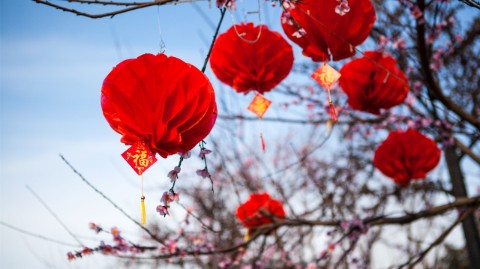
Return-free risk, or opportunity knocks in Asian equities?
“Markets are constantly in a state of uncertainty and flux, and money is made by discounting the obvious and betting on the unexpected.”
- George Soros, renowned investor and philanthropist. 1
Return-free risk, or opportunity knocks?
Our previous note opened, with a wailing lament, at the absolute performance of Asian markets over the last decade. Technology, Taiwan and India have been the things to have owned, with everything else adding up to a rounding error. But, looking out, we concluded there were reasons to be optimistic.
That said, some clients latterly and rightly still ask, “Why should I bother with emerging markets?” After years of seemingly profitless growth, some of them now characterise the investment opportunity set hereabouts as being largely one of return-free risk. Eating our own cooking, as we do, it is hard not to sympathise with such views.
But as we had noted back then, by the time most investors have decided that something is barely investable, the bottom is usually not too far away. Such commentary, along with indiscriminate selling, typically coincides with, and perhaps even climaxes at, market bottoms.
With the sellers having mostly capitulated, it does not take much for markets to bounce strongly. And here we are, not even six months later. Technically, with a 20%+ bounce, China (and even Hong Kong) are now defined, rather banally, as being in bull markets. Happy days are here again?!
Clearly, what happens next is what matters. Last time we concluded that the future looked rather bleak and that by and large, sadly, there has been little sign of change or improvement. Indeed, it seems more than likely that the underlying fundamentals are continuing to deteriorate even though share prices have bounced.
China’s economic model seems intently supply-side focused. Consumption is likely to remain weak, even in the increasingly unlikely event that specific pro-spending policy initiatives emerge. The scale of the residential property bust and its share of household wealth are that overwhelming.
Overall, conditions in China remain rather challenging. From a policy perspective, geopolitical tensions appear to be ratcheting upwards as well, even before there is any change in the White House. Then again, markets usually surprise and often reward the naïve optimist, as opposed to the more realistic pessimist.
Who knows what will happen; but asset allocators will decide what’s best for them. In the meantime, we believe we remain well diversified and particularly keen on balance sheet strength (avoiding US dollar debt). Otherwise, it is the usual trifecta of management integrity (and capability), franchise strength (and resilience) and us wanting to pay a reasonable valuation.
In our experience, adversity often favours higher-quality companies. They gain market share, while shareholder returns can be enhanced by less competition and, paradoxically, a broadly-higher cost of capital. Top-down, it has always been a struggle in India, compared to China, but look at the bottom-up outcome. That is the eternal lesson.
Portfolio activity
Portfolio trading activity in the FSSA Asian Growth strategy has been higher in the last six months, at 9% (or 27% annualised). That should not be too surprising, per our last note. It should now fall from here. We have, despite the behavioural difficulties, attempted to follow our own advice and added to China, while trimming India.
The outcome, overall, is that the portfolio has become more concentrated while the number of holdings has fallen from 35 to 34. The top-ten holdings now account for 53% of the strategy, while in the past it has typically accounted for a high 40-percent quantum.
On China, we have further reflected on the outlook for broad consumption. This has resulted in a change of emphasis regarding our holdings in purely domestic companies. We discussed some of these ideas (and new positions) in our last note and have since pushed on with portfolio execution.
In terms of new positions, we added only two companies over the past six months: President Chain Stores in Taiwan and DBS Bank in Singapore2. We already own Oversea-Chinese Banking Corp (OCBC)3 as a top-ten position, which, incidentally, has finally moved to privatise Great Eastern Holdings4 (1% fund position), at a 40% share-price premium.
We are as happy with the outcome as we can be, but the take-out price highlights how asymmetrical the risks are in Asian deep-value investing. The business is being taken out at a 30% discount to embedded valuation (EV). At least, we think, it bodes well for capital management at OCBC.
For both Singapore banks, the return on equity (ROE) has risen quite sharply (with DBS being higher due to its broader deposit franchise). We expect higher interest rates to remain quite persistent. This seems to be the new consensus, but both banks still look reasonably attractive, particularly given their returns policies.
Given the concerns we discussed previously, as well as our already-reduced positions, in the last six months we exited Jardine Matheson, Shiseido and Shanghai International Airport (SIA)5. We continue to hold Dairy Farm (DFI)6 and have latterly added back to Jardine Cycle & Carriage.7
Chinese international travel hasn’t recovered much after Covid. Both Shiseido and SIA have suffered from changes in China’s duty-free markets too, with the growth of Hainan Island and the emergence of ever more competition (for Shiseido in particular, and cosmetics in general).
We owned President Chain Stores in the past, having sold it on valuation grounds and slower growth. It is widely regarded as the best 7-11 operator in the world. The shares have since been de-rated, growth appears to be picking up again and we believe it remains a high-quality business. We bought a 1% position.
Tencent8 & AIA9
We discussed Tencent at length in our last note. It has always been a formidable business, but it was difficult to imagine that it would continue to scale (and evolve) over such a sustained period. Then, as noted, there was the variable interest entity (VIE) issue and top-down policy risk.
In hindsight, it’s easy to say that when the policy risk (and regulatory heavy-handedness) finally turned up, we were ready to take advantage of the relative share-price weakness. It was not quite so simple, but the management alignment and capital management, with a much lower valuation, seemed fairly compelling.
We also saw China’s policy flip-flop, in terms of gaming regulation and the subsequent removal of a key official over Christmas 2023, as potential signs of a return to normalisation for the sector. Looking back, we thought the teens rating looked attractive if investors were to ever broadly return to China.
We made Tencent a much more meaningful holding; it is now the second-biggest weighting in the portfolio. WeChat has a strong franchise that remains under-monetised and with Tencent’s recent results, as well as the cash-flow generated, we are happy with the outcome and exposure.
Otherwise, our exposure to China was boosted by a marked increase in our AIA position. It is still only about 3% of the portfolio, but that is a sharp uplift from a low of just above 1%. The price had more than halved over the last twelve months, getting our attention.
We have liked the company for some time, though life insurance is fiendishly complex. Simplistically, going back to its 1919 founding in Shanghai, it has obviously endured; and we know that customers continued to pay their premiums even when the parent (AIG) went bust in 2008. What a franchise!
With insurance and banks, it comes down to the track record and trust (particularly in the people). With respect to financials, on banks you can never fully know all about the assets; and with insurance companies, it’s the same for the other side of the balance sheet – the liabilities.
In our view, AIA had fallen to an attractive valuation, in terms of the earnings multiple, while we still see scope for further expansion of its China business (the only China business originally 100% controlled by a foreign company). In addition, they continue to benefit from writing US dollar-equivalent policies in Hong Kong.
There is clearly regulatory risk here, in terms of China capital controls with Hong Kong, but that has always been the case and one cannot have things every which way. Either Hong Kong is becoming more integrated into China, with all the resultant implications, or more barriers will go up. For now, the latter does not seem to be the case.
Midea10 & TSMC11
Otherwise, we added to Midea, which is still a top holding at 5%. Export growth, import substitution and capital investment are all decent tailwinds, while the absolute valuation and alignment remain good. The annual report is reassuring, with property completions versus sales still something to keep in view.
We added a little to Taiwan Semiconductor (TSMC), too. We discussed it previously. It remains the largest holding (now at 9%). The pushback is that it is a consensus play, but that has been true for many years. We added, being struck by the simple fact that it is one of our “cheapest” holdings (on a price-to-earnings basis) versus its growth.
The management have continued to deliver and diversify. Apart from the obvious geopolitical and AI-thematic risk, its geographical diversification will certainly have some impact on returns. We think this remains a few years off, but it’s not being discounted and is something to keep in mind.
The other additions were in India – Axis Bank and Mahindra & Mahindra12. We have discussed both at length in previous notes and the investment cases seem to be unfolding much as we had hoped. While they have performed well, neither looks egregiously valued, given the ongoing improvement.
Other changes
The substantial additions to Tencent, as well as AIA, were partly funded by a reduction in our holdings of China Mengniu Dairy and China Resources Beer13. At China Mengniu there has been a change of leadership, while the milk/yogurt category seems quite challenged, per competitor Yili’s recent results.
We have questioned capital allocation at China Mengniu Dairy in the past but should have been more purposeful. The company has been sharply de-rated, but we believe that both domestic consumption and the premiumisation trend continue to face severe headwinds. We have reduced our Mengniu holding sharply.
If we look at Japan as an analogue, consumption could lag for many years to come. Without a bullet-proof franchise (is there ever one?) or good capital management, things may remain tough. Mengniu is a state-owned enterprise, which means we have always wondered about the alignment.
China Resources Beer (CRB) has done better, but all the beer companies are focused on premiumisation. We are still not entirely happy with CRB’s acquisition of a liquor company, but the management team and beer industry concentration remain positive factors. We reduced the holding to 2%.
Otherwise, in terms of China exposure, we trimmed Nippon Paint14, though the business continues to do well in the face of a property bust. In India, we reduced our exposure to the banks, trimming HDFC Bank and Kotak Mahindra Bank15. Kotak has fallen sharply; we had decreased it to a 2% weighting.
Universal Robina Corp (URC)16 in the Philippines has been a drag, even though the overall business has continued to deliver growth. We trimmed the holding back to 1%, with the Philippines facing a tougher environment. Other modest trims included Fanuc17 and Vitasoy18. They have been small holdings, circa 1%, for some time.
Portfolio metrics
One consequence of greater portfolio concentration has been an improvement in a key metric: the look-through ROE of the fund. The overall portfolio ROE has been lifted to 23% (from 20%), while the top-ten ROE is now 24%. The market ROE remains 12%, as measured by the MSCI AC Asia ex-Japan Index.
Simplistically, the forward price-to-earnings ratio (PER) for the strategy is now 22x, which compares against a market PER of 14x. That means, all things being equal, that we are paying 50% more for a collection of companies with twice the return of the market. That looks like an attractive premium for the quality, in our view.
Our sense is that earnings are still under pressure, but our company holdings have generally held up in terms of profitability. You would expect that to be true, given our focus on persistency, as well as trying to ensure that we do not go down the quality curve.
The India weighting has fallen only marginally from 33% to 32%, which reflects the strong performance of some of our holdings (Colgate-Palmolive (India), Godrej Consumer Products and Mahindra & Mahindra, in particular)19. The China exposure has risen to 16% (from 12%) in simplistic terms, but economically it remains around the mid-30% mark.
Our exposure to the consumer sector remains substantial, with growing incomes and typically high returns businesses producing a good outcome over the years. However, this has eroded performance in the last year. The overall weighting has shrunk slightly from 31% to 30%, with 19% being Consumer Staples.
While we sold down China Mengniu Dairy and CR Beer, as discussed, our India Consumer Staples exposure has continued to increase with higher share prices. We own just two Consumer Discretionary businesses, Midea and Mahindra & Mahindra. Both are still doing well, in our view.
In terms of economic exposure, however, one should include Techtronic and Jardine Cycle & Carriage (JCNC), even though they are both classed as Industrials. For Techtronic, the weighting has risen to above 4% after a modest add and share price appreciation. JCNC (1.5%), despite the Singapore listing, is 85% Indonesia in terms of economic exposure.
The other significant change would be in Communication Services, where the addition of Tencent (alongside Naver) has lifted the weighting to 9%. Our IT exposure is 22%, while Financials has fallen modestly to 23% with the reduction in India bank holdings.
Mistakes & laggards
We discussed, last time, the dangers of following the consensus on China, with the remark that even if we don’t agree about it being broadly un-investable, it is easy to conclude that it’s just too hard. Investors have been swung all over the place, on China, in the past couple of years.
As we said then, we tried very hard to take a 3- to 5-year view and tune out the top-down noise. It’s hard because much of it seemed appropriate; but we have tried to be constructive nonetheless and remain open-minded. That’s the story behind Tencent.
We do think it’s different this time, with growing evidence suggesting that this indeed is the case. In fact, increasingly, we find it easier to be more constructive about China rather than Hong Kong. Hong Kong looks likely to be skewered (and it’s already happening) on China’s debt-deflationary property-led bust.
That brings us to Dairy Farm (DFI), as is our tradition. It would be remiss of us not to discuss how much this has hurt portfolio performance, as the ground has shifted underneath the business. It has de-rated, but there are finally some clear signs of improvement, as well as growing alignment with shareholder returns.
In our view, the business has turned a corner, for now, but the share price has yet to reflect the improvement in trading. This may be because things are going to get worse again, or it may be that nobody cares (the stock is traded in Singapore and is rather illiquid). We believe the worst has passed, but the road to recovery may be prolonged.
Outlook & conclusion
“The worse a situation becomes, the less it takes to turn it around, and the bigger the upside.” George Soros.1
Last time we concluded that there are always reasonable grounds for greater optimism, as well as thinking constructively, when extreme pessimism is anchored by lower valuations. In hindsight, it was a relatively straightforward call, but it did not feel like it at the time. Redemptions are usually coincident.
While markets have bounced somewhat, there doesn’t appear to be much evidence of underlying economic transformation. Exports and more investment continue to do the heavy lifting. At the margin, though, we do expect positive policy changes and a greater focus on returns.
We think the environment for equities is nevertheless likely to remain broadly weak. That sounds bad. On the other hand, while GDP growth may well be lower, a higher cost of capital and greater financial as well as management discipline are often necessary prerequisites for better markets.
We expect quality to perform better in such times, with less competition and a greater focus by investors on certainty, persistency, track-record, management capability and even survivability (i.e. balance sheets). This is the reason our performance, at least historically, has typically held up in more difficult times.
The portfolio has seldom looked better, in our view. In turn, our confidence in our bottom-up stock selection is supported by the collective ROE outcome. The combination of people, franchise and a reasonable valuation remains our North Star, particularly in these uncertain days.
We expect our strategies to perform better in times of adversity, but we are more pleased to see an absolute returns improvement, despite relatively lagging over the last 12 months.
As usual, we would like to thank our longstanding clients for their support, trust and patience, particularly in more recent times.
Footnotes
1 https://www.entrepreneur.com/en-in/entrepreneurs/7-leadership-quotes-by-the-man-who-broke-the-bank-of/252874
2 These comprise the only two new purchases over the past six months.
3 The only other Singapore bank in the portfolio.
4 The only holding currently undergoing privatisation.
5 These comprise the only three complete disposals over the past six months.
6 Largest Consumer Staples holding in Hong Kong.
7 Largest Industrials holding in Singapore.
8 Largest holding in China.
9 Largest Financials holding in Hong Kong.
10 Largest Consumer Discretionary holding in China.
11 Largest holding in the portfolio.
12 Two largest holdings in India.
13 The only two Consumer Staples holdings in China.
14 Largest holding in Japan (the majority of its sales are in China).
15 Along with Axis Bank, mentioned earlier, these comprise all the Financials holdings in India.
16 The only holding in the Philippines.
17 Along with Nippon Paint, mentioned earlier, these comprise all the holdings in Japan.
18 Along with Dairy Farm, mentioned earlier, these comprise all the Consumer Staples holdings in Hong Kong.
19 These comprise all the Consumer Staples and Consumer Discretionary holdings in India.
Source: Company data retrieved from company annual reports or other such investor reports. Financial metrics and valuations are from FactSet and Bloomberg. As at 22 May 2024 or otherwise noted. Portfolio holding weights subject to rounding, as at 30 April 2024.
Investment insights

- Article
- 8 mins

- Article
- 8 mins

- Article
- 4 mins
Important Information
This material is solely for the attention of institutional, professional, qualified or sophisticated investors and distributors who qualify as qualified purchasers under the Investment Company Act of 1940 and as accredited investors under Rule 501 of SEC Regulation D under the US Securities Act of 1933 (“1933 Act”). It is not to be distributed to the general public, private customers or retail investors in any jurisdiction whatsoever.
This presentation is issued by First Sentier Investors (US) LLC (“FSI”), a member of Mitsubishi UFJ Financial Group, Inc., a global financial group. The information included within this presentation is furnished on a confidential basis and should not be copied, reproduced or redistributed without the prior written consent of FSI or any of its affiliates.
This document is not an offer for sale of funds to US persons (as such term is used in Regulation S promulgated under the 1933 Act). Fund-specific information has been provided to illustrate First Sentier Investors’ expertise in the strategy. Differences between fund-specific constraints or fees and those of a similarly managed mandate would affect performance results. This material is provided for information purposes only and does not constitute a recommendation, a solicitation, an offer, an advice or an invitation to purchase or sell any fund and should in no case be interpreted as such.
Any investment with FSI should form part of a diversified portfolio and be considered a long term investment. Prospective investors should be aware that returns over the short term may not be indicative of potential long term returns. Investors should always seek independent financial advice before making any investment decision. The value of an investment and any income from it may go down as well as up. An investor may not get back the amount invested and past performance information is not a guide to future performance, which is not guaranteed.
Certain statements, estimates, and projections in this document may be forward-looking statements. These forward-looking statements are based upon First Sentier Investors’ current assumptions and beliefs, in light of currently available information, but involve known and unknown risks and uncertainties. Actual actions or results may differ materially from those discussed. Actual returns can be affected by many factors, including, but not limited to, inaccurate assumptions, known or unknown risks and uncertainties and other factors that may cause actual results, performance, or achievements to be materially different. Readers are cautioned not to place undue reliance on these forward-looking statements. There is no certainty that current conditions will last, and First Sentier Investors undertakes no obligation to publicly update any forward-looking statement.
PAST PERFORMANCE IS NOT INDICATIVE OF FUTURE PERFORMANCE.
Reference to the names of each company mentioned in this communication is merely for explaining the investment strategy, and should not be construed as investment advice or investment recommendation of those companies. Companies mentioned herein may or may not form part of the holdings of FSI.
For more information please visit www.firstsentierinvestors.com. Telephone calls with FSI may be recorded.